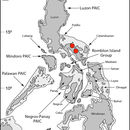en
names in breadcrumbs


Brachymeles lukbani is one of only five known limbless species of lizard in the genus Brachymeles. This species is only known to occur on a single mountain in the Philippines. The genus Brachymeles represents a unique group of semi-burrowing (semi-fossorial) lizards in that the group possesses species with a full spectrum of body forms, from limbed species with five fingers and five toes, to fully limbless species. Researchers are interested in the process and patterns behind the evolution of these drastic changes in body form. With the exception of two species from Borneo (B. apus) and Thailand (B. miriamae), all species of Brachymeles are endemic to the Philippines. This means they are found among the more than 7,000 Philippine islands and nowhere else in the world.
We have evaluated this species against the IUCN criteria for classification, and find that it does not qualify for Critically Endangered, Endangered, Vulnerable, or Near Threatened status. Brachymeles lukbani has been documented to be quite abundant at all sampled localities. We therefore classify this species as Least Concern, LC (IUCN, 2010).
Brachymeles lukbani can be distinguished from congeners by the following combination of characters: body form long, slender; limbless; midbody scale rows 21–23; paravertebral scale rows 100–106; infralabial scales six; supraciliary scales six; supraocular scales five; pineal eye spot; contact between frontoparietal scales; postmental scale width equal to mental scale width; contact between the first pair of chin shield scales; non-fusion of mental and first infralabial scales; enlarged, differentiated nuchal scales; continuous subocular scale row; third pair of enlarged chin shields; and uniform body coloration. The species was named in honor of Vicente R. Lukban (February 11, 1860–November 16, 1916), whose role in directing military operations for the Philippine army was instrumental in helping to win Philippine independence. He would later become a general in charge of the political and military operations in Samar and Leyte Island. General Lukban was born in the Municiapality of Labo, Camarines Norte Province, close to the type locality of the new species.
Brachymeles lukbani is known only from Mt. Labo, Municipality of Labo, Camarines Norte Province, Luzon Island, Philippines.
The coloration of the new species provided obvious camouflage within soil and loose material within rotting logs. Individuals were discovered only after rotting logs and soil habitats were disturbed, and individuals would immediately attempt escape by lateral undulation.
The species occurs in the Bicol Peninsula of the Philippines, which is widely recognized as a distinct area of diversity within the Luzon Pleistocene Aggregate Island Complex (PAIC; Brown and Diesmos, 2002).
Brachymeles lukbani occurs in primary and secondary forest. Individuals have been observed in the dry rot loam within decaying logs, loose soil, and leaf litter.
This species looks most similar to Brachymeles minimus, another limbless species occurring on Catanduanes Island, Philippines.
Brachymeles lukbani is ovoviviparous, as are the other species of Brachymeles for which reproductive mode is known. Two large eggs were observed in the uterus of gravid females.
SVL 69.9–88.7 mm
Although Brachymeles lukbani is regognized as common at its type locality, little is known of its full geographic distribution in the Philippines. Extensive habitat desctruction has taken place throughout the Bicol Peninsula. The species is known from rotting logs and moist, loose soil in primary and secondary forest. It can be assumed that the continued destruction of habitat at this species type locality is a threat to its survival.
Unfortunately, only two expeditions have been documented to this species type locality. The first expedition conducted in 2006 was focused on surveying small mammal diversity on Mt. Labo in the Bicol Peninsula. The field team discovered a single specimen of this unique, limbless species. A herpetolgocial field survey followed at the same sites in 2008, where 13 additional individuals were observed. However, there is currently not enough data to infer any trends in population change. Future studies on Mt. Labo are highly recommended.
Brachymeles lukbani is a species of skink endemic to the Philippines.[1]
Brachymeles lukbani is a species of skink endemic to the Philippines.